
- Power: 45W Each
- 180W 3 Way Car Audio Coaxial Speakers
- 1/ 2″ Silk Dome Piezo Tweeter
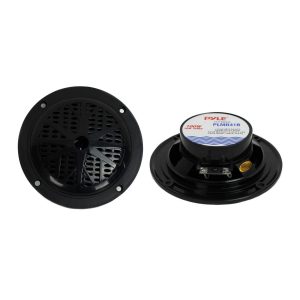
- Completely Water Proof
- Polypropelyne Cone With Cloth Surround
- Low Profile Design
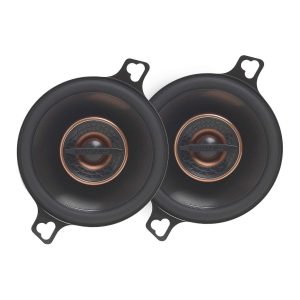
- Oversized Plus One Woofers
- Edge-Driven Textile Tweeters For Smooth Highs
- Speaker Type – Woofer
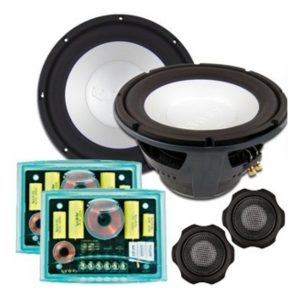
- Cast-Aluminum Woofer Frame
- Anodized-Aluminum Woofer Cone And Tweeter Dome
- Butyl-Rubber Surrounds
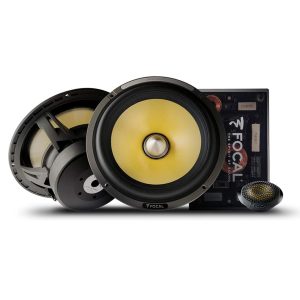
- Tuned Mass Damper surround
- “M” Profile Aramid Fiber Inverted Dome Tweeter
- Max Power 200W
Choose the Best Car Speaker for Metal
Customer’s Choice: the Best Rated Car Speaker for Metal
110 users answered this survey. Please help us improve this review!
Vehicle radios are old technology, but modern stereo systems can make every trip pleasant. The sound quality has also improved significantly. Sometimes customers do not expect vehicle speakers to meet the highest demands. Manufacturers pay close attention to the issues of protection, safety, and comfort and are sometimes not hi-fi specialists during the process of making vehicle design. That does not mean that you have to go without a full, rich sound while listening to music in the car. As a solution, you may get more vehicle speakers by yourself. They can give you the music enjoyment you want.
Here you will find reviews of several wonderful car speakers that will allow you to enjoy your favorite metal music. Each of them has strong and weak sides, which you should take into consideration.
Table of Contents
Rockford Fosgate R165X3 –The Most Powerful Speakers
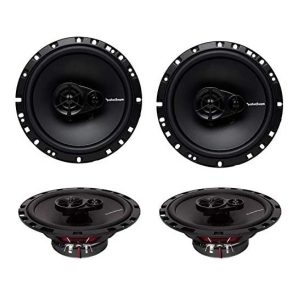 There is no need in overpaying when you wish to get some nice speakers. On the market, you can easily find various affordable models with decent quality. One of them is 4 New Rockford Fosgate R165X3.
There is no need in overpaying when you wish to get some nice speakers. On the market, you can easily find various affordable models with decent quality. One of them is 4 New Rockford Fosgate R165X3.These vehicle speakers belong to the most popular models among customers. The sound they deliver does not disturb ears. Instead, it is very smooth. You can enjoy your rides with these wonderful new speakers.
With proper speakers, you would like to ride a bit more every day just to enjoy your favorite music. The 9.7-pound vehicle speakers deliver all kinds of sounds appealing to listeners. Their design is an additional reason to consider them. They are three-way speakers. It means that the woofers, tweeters, and midrange drivers work synchronically to produce top-notch sound.
Performance
Due to proper crossover, you get playback of any frequency without interruptions and distortions. Speaking about specs you receive 45watts with a sensitivity of 91dB while the driver size is just 6.5inches. It is necessary to mention that a standard impedance value is 4ohms what is quite common in modern loudspeakers.
With this model, you receive high-quality and clear sounds that are very accurate. Thus, when you can distinctly grasp all the musical instruments in songs and music. If you are not sure of getting amplifiers to the car, you can just get these speakers. They do not require additional equipment to operate. They are easy and simple to install.
Pros
- Great electronic components provide exceptional opportunities for professional musicians;
- They are immune to cracks and sun damage due to reliable materials;
- Speakers do not require a lot of space to fit into various vehicles;
- The loudspeakers have heavy magnets inside what easily satisfies listeners of loud music.
Cons
- Sound can be distorted at high volumes.
Pyle hydra PLMR41W – Best Waterproof Speakers
 Most speakers that you install to vehicles are primarily focused on cars. However, Pyle Hydra has decided to deliver wonderful sound even when you enjoy a voyage on your yacht. The PLMR41W is the set of two waterproof speakers.
Most speakers that you install to vehicles are primarily focused on cars. However, Pyle Hydra has decided to deliver wonderful sound even when you enjoy a voyage on your yacht. The PLMR41W is the set of two waterproof speakers.You should not worry about installing them anywhere outside, as they can withstand various wet weather conditions.
Performance
The high-quality sound is being delivered via two 4-inch speakers with 100-watts of power output. Moreover, PLMR41W has a 15 Oz magnet, which makes this audio speaker complete together with enough impedance. With 4ohms and a frequency response of 100Hz-18KHz, you receive a wonderful quality of sound.
While buying these speakers you will not need to buy additional parts to install them. Inside of the box, you have the cutout template with all the necessary screws and cables. With the low profile design, it easily fits the various designs.
Pros
- Great electronic components provide exceptional opportunities for professional musicians;
- You will not spend much time installing speakers;
- They can be quite loud;
- Compact and convenient size.
Cons
- The depth of bass is not enough.
Infinity REF-3032CFX – Best for Quality & Price Balance
 The quality of sound also plays an important role, in-car speakers. REF-3032CFX from Infinity understands that and uses Plus One woofer architecture. It delivers higher sensitivity and accuracy of music reproduction.
The quality of sound also plays an important role, in-car speakers. REF-3032CFX from Infinity understands that and uses Plus One woofer architecture. It delivers higher sensitivity and accuracy of music reproduction.Very friendly vehicle speakers will improve trips with an amazing listening experience. Speaker does not require a lot of time to break-in and performs at the maximum of their capabilities.
Performance
These speakers are suitable for those who like to travel in various weather conditions. Their build consists of various reliable and sturdy materials.. This model is very easy to install in various vehicles. It just has 3.5 inches drivers that produce 75-watts of power output. The speakers have high-quality crossover components that carefully send the highs and lows to appropriate speakers so that the right balance can produce a wonderful sound.
Pros
- Carbon-injected cones increase service life;
- It has a built-in crossover;
- With Harman’s technology, it delivers high-quality sounds.
Cons
- The area of installation has to be the same size as the speakers.
Infinity Kappa Perfect 5.1 –Best for Premium Quality
 This line of products has enjoyed a good reputation among music lovers for years. The Kappa Perfect 5.1 presents an interesting model of car speaker. The Kappa range has all of the brand’s advanced technologies.
This line of products has enjoyed a good reputation among music lovers for years. The Kappa Perfect 5.1 presents an interesting model of car speaker. The Kappa range has all of the brand’s advanced technologies.Featuring a patented carbon injected chassis with an anodized-aluminum woofer and “Edge-Driven” fabric soft-domed tweeters.
Performance
It is a two-way kit with 5.25 inches speakers, tweeters, and passive filters. For mounts outside the original locations, Infinity provides a nice pair of grilles. Each speaker has 100-watts of power, which makes it enough to reach high volume levels without losing the quality.
Pros
- Speakers perform without noticeable rattling;
- You receive high-quality sounds at various frequency ranges;
- It is made of durable materials to serve for many years.
Cons
- It somewhat lacks bass.
Focal ES 165 K2 – Best Set of Speakers
 The developers at Focal have secretly revised one of their most renowned loudspeaker series, the K2 Power series. The new K2 membrane is made of a very light foam core. It is sandwiched between a layer of fiberglass and a layer of Kevlar.
The developers at Focal have secretly revised one of their most renowned loudspeaker series, the K2 Power series. The new K2 membrane is made of a very light foam core. It is sandwiched between a layer of fiberglass and a layer of Kevlar.On this model, the coil cover is a semi-rigid dome. The woofer is built on a new non-magnetic aluminum chassis, supporting a large magnetic motor. The suspension of the woofer has been the subject of great attention by engineers.
The power of computing has made it possible to simulate and improve the suspension to have a very precise and dynamic sound. The K2 range woofers use TMD (Tuned Mass Damper) technology, which is a technique used in anti-seismic systems for high-rise buildings. It stabilizes the behavior of the suspension at resonance to avoid deformation of the cone and above all not to penalize the dynamics. This technique has also been the subject of a patent. Distortion is reduced and you get even more precise listening. Focal also uses this process on these Sopra home speakers.
Performance
The ES165K collects 100 Watts RMS and offers an efficiency of 90.8 dB. Its frequency response ranges from 60 to 22000 Hz with a resonant frequency of 64 Hz. being a 4-Ohm model. It can work with all amplifiers, including a car radio.
To meet all mounting needs, this kit comes with a pair of grilles for the woofers and an angled stand for the tweeter. The tweeter allows 3 possible assemblies: original location, Flush and inclined support. Of course, with a kit of this level, it is recommended to use quality HP cable.
Pros
- After several hours of break-in, the sound becomes softer and even more precise;
- The highs are very pleasant and do not attack, including on “metal” music;
- It is not difficult to install this car speaker.
Cons
- If you want to fully enjoy the musicality and dynamics, you have to use it with a power amp.
Best Car Speakers for Metal – Buyer’s Guide
Separate car speakers, which you replace with the standard speakers in your car, give you richer sound. Car manufacturers have already made the preparations for replacing the speakers. Every modern car is equipped with cables to install more speakers and sometimes even additional tweeters. In doing so, you can either replace your existing speaker system with the higher-quality speakers yourself or have the removal and installation carried out by a car audio specialist. With an additional amplifier, you can further increase the performance of the built-in car speakers.
Two different types: separate car speakers are available as 3-way speakers and 2-way speakers. We will explain the differences later under the chapter “What car speakers are there?” in our guide.
How are car speakers constructed?
Car speakers models are usually full-range speakers that cover the entire audible frequency range. Speakers with a 3-way system, on the other hand, distribute sound production among three components, all installed in one unit. You can also place the three components separately in different locations in the car. The components we are talking about are the tweeter, the midrange driver, and the woofer or subwoofer:
The tweeter operates in the frequencies from 2,500 to 20,000 Hertz, is only a few inches tall, and is best mounted at head or shoulder height.
The midrange driver has frequencies from 400 to 2,500 Hertz, which is roughly the range of the human voice. The diameter of the midrange driver is often 3.93, 5.11, or 6.49 inches.
The woofer plays in 40 to 400 Hertz frequencies, and the subwoofer often plays in the ranges of 30 to 150 Hertz. The larger the woofer, the more powerful the bass. It has the shape of a tube or a box and is usually found in the trunk.
The easiest to install are speakers with a compact 2- or 3-way system in only one component. However, for optimal sound, we recommend installing the components separately. We will tell you more about the differences and advantages, and disadvantages of the two systems of car speakers in the section “What car speakers are there?”.
How do car speakers work?
As mentioned above, car speakers are distributed in different places in the car to give you the best sound. First, it comes from the front speakers, called the front system, which is installed in the A-pillar, on the dashboard, or in the front doors. On the other hand, the subwoofer is at the rear of the vehicle, which provides the sound in the low frequencies. The speakers are connected to your car radio. To install the car speakers, you should have some technical knowledge to avoid a cable fire or other interference.
Which car speakers are available?
The 3-way speaker scores with a slightly better sound, as the highs and lows and the mids, are balanced. It also makes the bass much more powerful than the 2-way speaker. Nevertheless, 2-way speakers are more often installed because their compactness provides optimal sound in a small space. You can buy 2-way speakers as coaxial speakers. They consist of several units arranged concentrically and interleaved, as well as special transducers. In these speakers, the tweeter is there to prevent sound distortion. Component speakers are more compact, available in a set and speaker systems, and offer a separate tweeter and crossover for greater sound enjoyment.
In the following overview, we briefly show you the advantages and disadvantages of a 2-way speaker compared to a 3-way speaker:
Pros:
- Available as coaxial and component system
- Optimal sound in a small space
- Due to the compactness, more often installed
Cons:
- Not as rich bass as the 3-way speaker
Coaxial vs. component speakers – what are the differences?
The coaxial speaker is defined by a nested design. This means that a smaller speaker is centered on a larger speaker. So, in a coaxial speaker, low, mid, and high tones resound from the same place. This type of speaker is best for beginners, as it is the easiest to install. Small cars also benefit because the coaxial speaker can cover sounds in all frequency ranges with just one box that you mount on the dashboard. To the ear, the coaxial speaker sounds most natural because the sound originates at only one point. However, since speaker devices in the car are often installed in the footwell, the sound is lost again somewhat.
Pros:
- Easy installation
- Suitable for small installation places on the dashboard
- One speaker reproduces the entire frequency spectrum
Cons:
- Not aimed directly at the driver
- Sound is lost when installed in the footwell
In the component speaker, the woofers and tweeters are not nested but are separate speakers. Component speakers are something for music lovers. You can install the woofer in the footwell and the tweeter at head height. Accordingly, low, mid, and high tones resound from different points. The sound is, therefore, distributed very harmoniously and fills the room. However, these speakers are somewhat more complex to install.
Pros:
- Different components can be combined
- Optimal sound
- Alignment to the driver
Cons:
- Installation is more complex and may require a specialist
- Tweeter must be installed separately
Which car speaker manufacturers are there?
You should keep this in mind! Numerous companies manufacture car speakers for metal music. Among them are Baseline, DROK, BOSS Audio, Etsue, TekHome, Kenwood, Hertz, Mac Audio, Sony, Renegade, Eminence, JVC, JBL, Rainbow, Eton, Hifonics, Pioneer, Visaton, and AERZETIX.
Where can you buy car speakers?
You can get car speakers at electronics stores near you. Alternatively, you can look around on the Internet and find a wide selection of online stores. If you buy the speakers at your local store, you can look at them and possibly try them out. Also, a knowledgeable consultant will be available to assist you. You do not have these options when buying online. However, you can compare many more models on the web and read customer reviews. Often, the products are also cheaper to have here. Decide which way of shopping you prefer.
How much do car speakers cost?
The cost of car speakers in itself is not particularly high. You can get simple speakers for as little as 20 dollars. However, to be sure of getting good quality, you should invest at least 40 dollars for them. All models that are below this price, after all, provide satisfactory quality. More complex boxes with rich basses and a particularly high wattage can occasionally cost over 100 to almost 200 dollars. As a rule, however, prices range from 20 to a maximum of 100 dollars.
On the other hand, more expensive is the installation by a professional, which is, however, highly recommended for modern cars. Today’s cars are very sensitive in their technology and electronics. If you try to install the boxes on your own, you could possibly interfere with the bus systems in the car. If you have an older car, the car manufacturers can retrofit your car.
How much does it cost to have car speakers installed by a professional?
Depending on how elaborate the installation of car speakers on your vehicle is, it can cost between 200 and 500 dollars or even more. Prices also depend on the type and number of speakers. It’s best to compare prices with several car hi-fi specialists on the Internet. Many suppliers have price lists on their sites, from which the costs for the installation of different speakers can be seen. An example calculation for a very extensive installation, including a radio, gives you an idea of the possible costs, which would total 620 dollars here:
- Installation of a radio: 50 dollars
- Installation of an amplifier: 250 dollars
- Installation of a loudspeaker: 120 dollars
- Insulation: 150 dollars
- Calibration: 50 dollars
Which purchase criteria should you pay particular attention to when buying car speakers for metal?
The selection of car speakers often seems unmanageable, and you are probably wondering which criteria you should use to compare the products and what certain technical specifications actually mean. Therefore, we would like to tell you here the most important factors you should look at when comparing car speakers in terms of quality and individual suitability for your needs. The essential buying criteria for car speakers, which we will explain to you in more detail afterward, are:
- Installation and size
- Power
- Impedance in ohms
- Volume
Installation and size
Before choosing specific car speakers, you need to make sure that their size is suitable for your vehicle. To do this, measure the distance between the diagonally opposite screw connections and check the installation depth in inches. Flat car speakers have a depth of about 1.57 inches. However, there are also speakers with a depth of 2.36 to 2.59 inches.
Measuring is important so that the car speakers, regardless of the manufacturer, fit into the prefabricated troughs in your vehicle compartment. Many car speakers have standardized sizes of 3.93, 5.11, or 6.49 inches. These include speakers from JBL, Bose, Rainbow, or even the discounter Aldi. As mentioned in our guide, installation should be carried out by a specialist.
What else do I need to consider? Car speakers with a rich bass usually have somewhat larger dimensions.
Power
The maximum power does not play an important role for car speakers. It only refers to the maximum power in watts that can theoretically be achieved for a short time. However, you don’t have to pay much attention to watts’ maximum power because it doesn’t say much about the practical performance. The average power, on the other hand, is indicated with the abbreviation RMS. The abbreviation means “Root Mean Square”, and is a more realistic estimate of actual speaker performance.
Admittedly, it is rather a measurement of an alternating current’s effective value, which is not at all clearly feasible in a car. However, if you want to compare speaker performance, RMS is a value to go by. Some manufacturers also specify the rated power or rated power handling. This is a roughly comparable value with RMS power, although the measurement method remains unclear.
How can I improve performance even more? If you want to achieve even higher performance, you can additionally purchase an amplifier. However, this also demands more power from your electronics installed in the car. When buying an amplifier, make sure that the impedance in ohms is the same for speakers and amplifiers.
Impedance in ohms
Impedance in ohms can be briefly explained like this: When the audio signal flows as an alternating current from the speaker’s amplifier, resistance is created in the speakers’ circuit. How high this resistance is differs depending on the loudspeaker. Most speakers have an impedance of 4 ohms. However, some models have a lower or higher impedance value. By looking at the impedance rating on amplifiers, you can see which speakers they are suitable for.
Avoid low power or defects: To be on the safe side, you should avoid connecting an amplifier with 6 ohms to a speaker with 4 ohms. Indeed, this rarely causes problems. However, if you turn up the full amplifier blast for an extended period of time, you may experience your speaker’s reduced performance or failure.
Volume
When looking at the manufacturer’s specifications, pay attention to the sound pressure level in decibels. It gives an indication of the volume your car hi-fi system can achieve with the speakers without distorting the sound. As a rule, car speakers have values of up to 90 decibels or just above. Higher values are neither feasible nor good for your hearing.
Exponential progression of volume: Note that the decibel scale is not linear but exponential. In this case, the volume doubles every 10 decibels.
This means that with an increase from 90 to 95 decibels, the volume is increased by 40 percent.
Legal and safety aspects of car speakers
Car hi-fi tuning equips a vehicle’s interior with extensive sound systems ranging from speakers and amplifiers to powerful bass boxes. Such a sound system tempts you to listen to metal music very loudly. Therefore, if you undertake a car hi-fi tuning, you have to pay attention to some things legally and from the point of view of road traffic safety. Because warning signals from the fire department, ambulance, or police can quickly be overheard once by the volume and the strong bass, other road users may also be affected by the noise.
Sound systems should, therefore, never be turned up to full volume. Otherwise, however, conversions inside the vehicle are permitted. You can easily remove existing components and replace them with new ones. The trunk is the ideal place to install subwoofers and other speakers. The only thing you are not allowed to change is fuses.
The place of installation
There are usually at least four places in the front and rear doors where you can install good speakers for your car. Sometimes even special places for tweeters are already provided. With these four surround speakers, you can already relatively well control what direction and intensity the sound is perceived in the car.
To emit the sound not only from diagonally below, but there are also car surface-mounted speakers that are mounted on the parcel shelf, for example. With these, the sound is emitted at head height and not at leg height, as is usually the case.
With the car speaker in the 3-way system with tweeters and mid-range speakers in the door, the subwoofer can easily move into the trunk. This is because the auditory system has difficulty spatially classifying low frequencies. All that matters here is that they are present at all.
For this reason, loudspeaker construction is a popular method for hobbyists for the subwoofer or woofer. In this way, you can optimally adapt it to the conditions in the car.
Also, the advantages of the 3-way system with individual speakers can not be denied:
Pros:
- individual drivers optimized for different frequencies
- depending on the type varies material and basic technology for ideal sound
- positions in the car adaptable
Cons:
- a high effort for installation
- large space requirement
Compact 2-way speakers from Hertz, Eton, or another manufacturer represent the less costly alternative, although the perfect bass development should not be expected. The design of these car speakers has the disadvantage that the tweeters are actually positioned too low. However, both sound sources are in the same place, which improves sound quality.
Another possibility is car speakers, which must be positioned very conspicuously and by choice of the parcel shelf as installation location often costs a lot of trunk space. However, if no preparations have been made in the doors, this variant is the easiest to install.
Important when mounting
Even the recommended car speaker comparison winner reaches its limit in a car door. The trim and sheet metal of the door tends to vibrate, severely degrading the sound quality. First, make sure that the speaker is firmly seated.
If the sound remains unsatisfactory, it may be necessary to insulate the door. For this purpose, there are numerous aids available from specialist dealers that are comparatively easy to use. With an insulating fleece and stabilizing bitumen tape, the individual parts of the doors are fixed and, as a solid base, even improve the speakers’ efficiency considerably.
What technical terms might you encounter when buying car speakers?
Some consultants explain car speakers with incomprehensible technical jargon. You know what is meant by certain terms. We will give you a brief overview of the most important terms here.
Bandwidth: This term refers to the tonal range of a hi-fi device. It is the range between the lowest and highest transmitted frequency.
Coaxial system: This refers to a 2-way loudspeaker in which the tweeter is mounted in the middle of the low (mid) frequency diaphragm.
Impedance: This refers to the AC resistance of electrical components and circuits. It is the connected value of a hi-fi component for the car, which is measured in ohms. When combining components, the output and input impedance must be in harmony with each other.
Sound Pressure Level: It is often simply called SPL for short, which means “Sound Pressure Level” written out. The SPL describes the volume level that the loudspeakers produce. The SPL is given in decibels, which is measured at 1-watt input power at a distance of 1 meter.
Door board: The door board is a replacement panel, or speaker support plate mounted on the vehicle door that holds one or more woofers, mid basses, or complete component systems. It is usually made of wood or plastic and covered with leather in the vehicle design.
Front system: it consists of several speakers that together sound the front part of your car interior. Therefore, these are aimed directly at you as the driver or passenger and should therefore have particularly high sound quality. Since the front system thus primarily contributes to music enjoyment, you should definitely not skimp on it.
High Fidelity: This term is on everyone’s lips for short as Hi-Fi. “High fidelity” can be translated as “high accuracy” and means “fidelity of reproduction.” With the term Hi-Fi, loudspeakers and audio equipment claim to reproduce music as faithfully as possible. In Europe, since the 1960s, it has been precisely defined which sound parameters may differ from the original sound signal and to what extent if they want to be considered Hi-Fi.
Chassis: Surely, you will often hear this term for the designation of car speakers. Chassis is nothing more than a single speaker without a cabinet.
Dome diaphragm: This is a spherical diaphragm of a tweeter, which is sometimes used to cover midrange drivers.
Diaphragm: This is the sound radiating surface of the loudspeaker chassis.
Bead: The bead is the edge suspension of the speaker cone.
Subwoofer: This refers to speakers with and without enclosures for the low bass range. Since you cannot locate frequencies below 100 Hertz with your hearing, only one subwoofer is required in your vehicle’s rear.
Rear fill: It’s basically nothing different than the front system, except that the sound comes from the rear. This improves the stage effect, but usually, in return, the sound is degraded due to phase problems. This is due to the fact that the music from behind has time differences and reaches the ear delayed like an echo. However, the advantage of rear fill is that passengers in the back seats can hear the music a little better. It is important to know that the rear fill should not play without its own volume or enclosure when using a subwoofer. Otherwise, it will be abused by the pressure from the subwoofer as a passive membrane. This runs counter to the music’s lifelike reproduction and, in the worst-case, destroys the speaker. Rear fill is something you can get as an option. It is not a must in order to enjoy the good sound quality.
When was the first loudspeaker invented?
The patent for the first electric loudspeaker existed as early as 1878, but it was not until 1925 that the first loudspeaker was presented to the public. It has since been optimized in terms of size, fidelity, and efficiency, but the electrodynamic loudspeaker’s basic principle has remained the same to this day. The invention of the loudspeaker is directly related to the invention of the telephone. Several engineers then pushed the loudspeaker’s development until, in 1878, Werner von Siemens obtained a patent for the electrodynamic loudspeaker still in use today.
The design was already very sophisticated with (hoof) iron magnet, moving voice coil, and moving diaphragm. However, suitable amplifiers were still missing. The founder of modern loudspeakers in England is considered to be the physics professor Oliver Lodge, who in 1898 produced sounds by means of electric current in a series of experiments. At that time, however, it was not yet possible to speak of high fidelity sound.
The loudspeaker did not reach market maturity until 1925 when it was presented at the first radio exhibition in Berlin. It functioned according to the principles we know today. For this purpose, it was equipped with a movable voice coil, which was connected to a cone membrane and repelled from the magnetic field surrounding it in time with the current flowing through it. However, there was still no powerful amplifier. Therefore, the efficiency of the loudspeakers had to be very high, which could only be achieved by using large horns for sound amplification.
The age of modern loudspeakers began with the Australian Albert Neville Thiele and the American Richard H. Small. They created the technical conditions for loudspeakers to become smaller and smaller while delivering amazingly good sound quality.
FAQ – frequently asked questions about car speakers for metal
What to look for in the car speaker for metal?
First, the size must be right for your car, both in diameter and depth. If you are using a standard radio without an additional amplifier, 50 watts of output power will be sufficient, although a higher value will not have any technical disadvantages.
With a 2-way system, you will usually get a better sound result than with a full-range speaker.
Especially when listening to metal music, a lot of subjective factors play a role, so you have to be personally convinced of the sound above all.
First and foremost, pay attention to:
- Diameter and depth
- Connection type
- Impedance
For all other key data, your personal preferences decide.
How do I measure car speakers?
You should determine the complete basket diameter of the speakers. This is the largest dimension, including the cabinet. As a guide, you can take the standardized dimensions, which are usually 3.93, 5.11, or 6.49 inches.
How do I install car speakers myself?
If you are handy, you can install the speakers yourself following installation instructions that are available on the Internet. Many instructions even explain the installation step by step for beginners. If you do not feel so confident in terms of craftsmanship and technology, a professional’s installation is advisable. All installation materials are included in the scope of delivery of car speakers as standard.
What exactly is a subwoofer?
A subwoofer is also called a woofer or bass box. It is a speaker that is specifically designed to reproduce low frequencies. These low frequencies are more noticeable than audible. In stereo mode, it is used for the bass support of small and large front speakers. In surround, a subwoofer is used to reproduce special low bass effects and support smaller or larger speakers.
How are car speakers enclosed?
Car speakers do not require their own enclosure, but only the diaphragm and surround. The covering usually consists of insulation or a metal grille.
How expensive is car hi-fi tuning?
That depends on which components you install. A complete sound system with a car radio, speakers, subwoofer, and power amplifiers as well as installation by a specialist, can quickly cost several thousand dollars.
Does the sound system affect fuel consumption?
Yes, electrical devices affect the energy and fuel consumption of your vehicle.
When installing the speakers, is it advisable to also have the car doors insulated?
Yes, because even the best car speaker only sounds as good as it is installed. Sheet metal parts and trim inevitably resonate and reduce the sound. There are various damping materials such as damping fleece, Alubutyl, and bitumen tape to quiet vibrating parts.

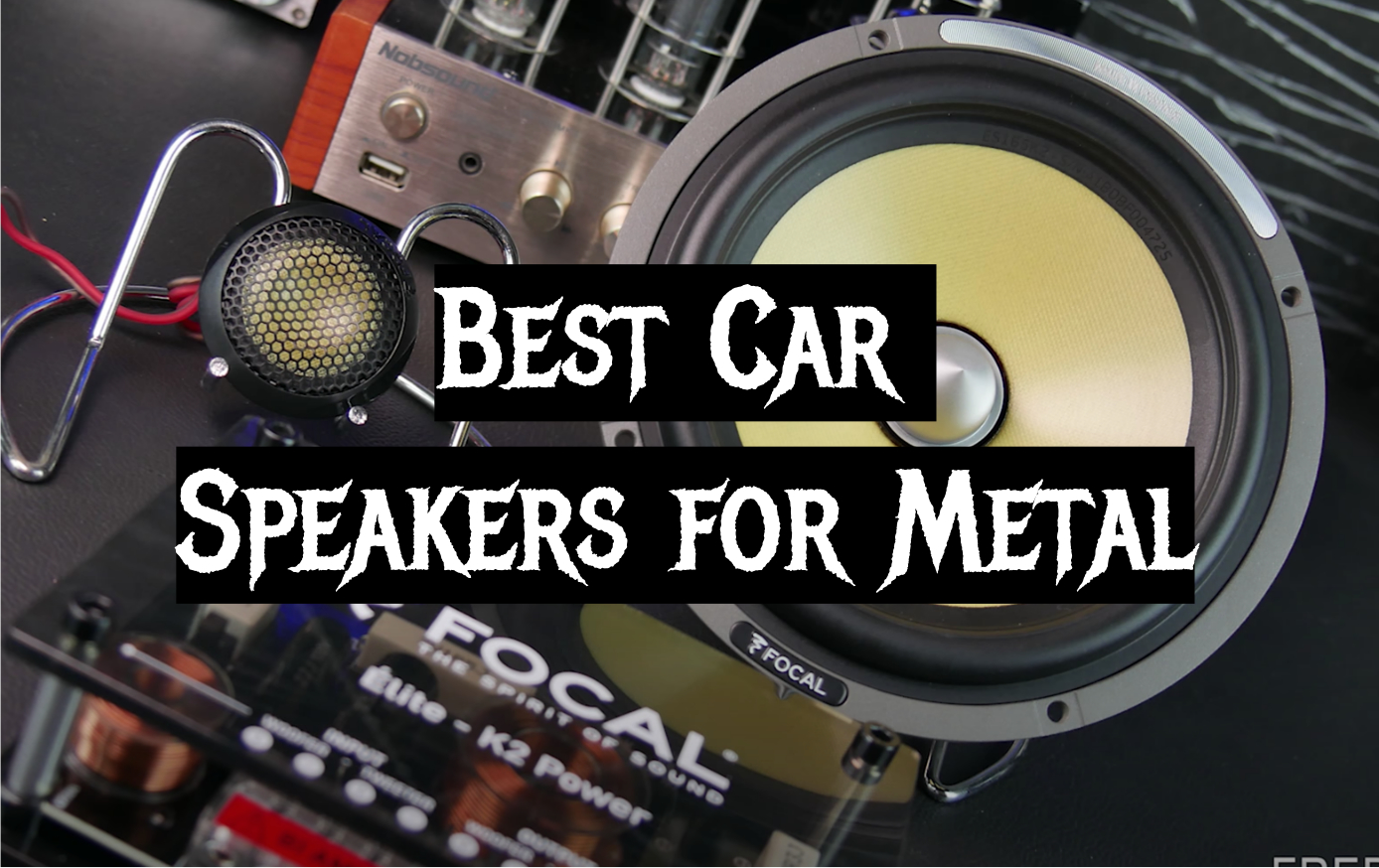



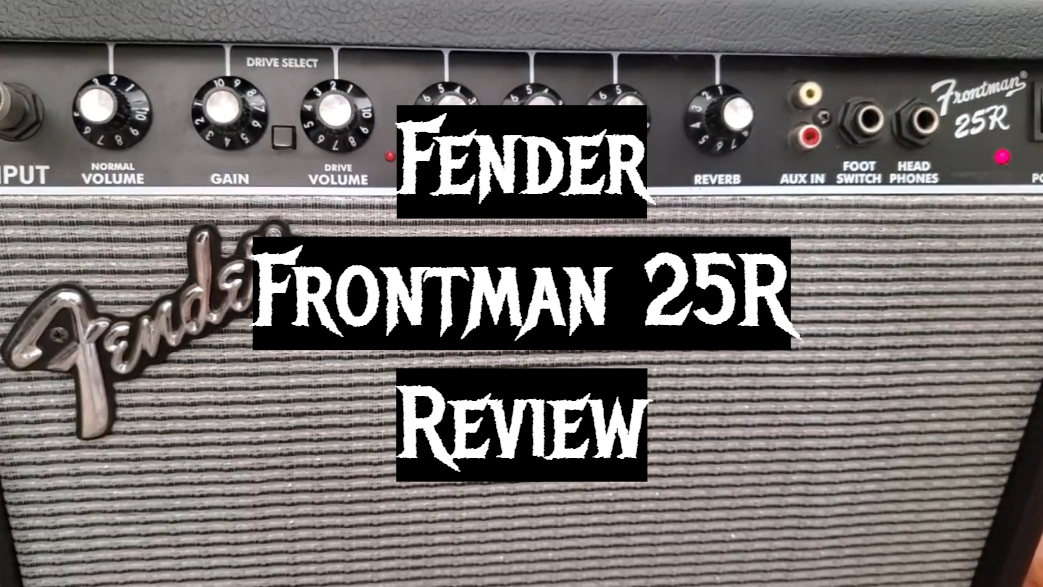
Leave a Reply